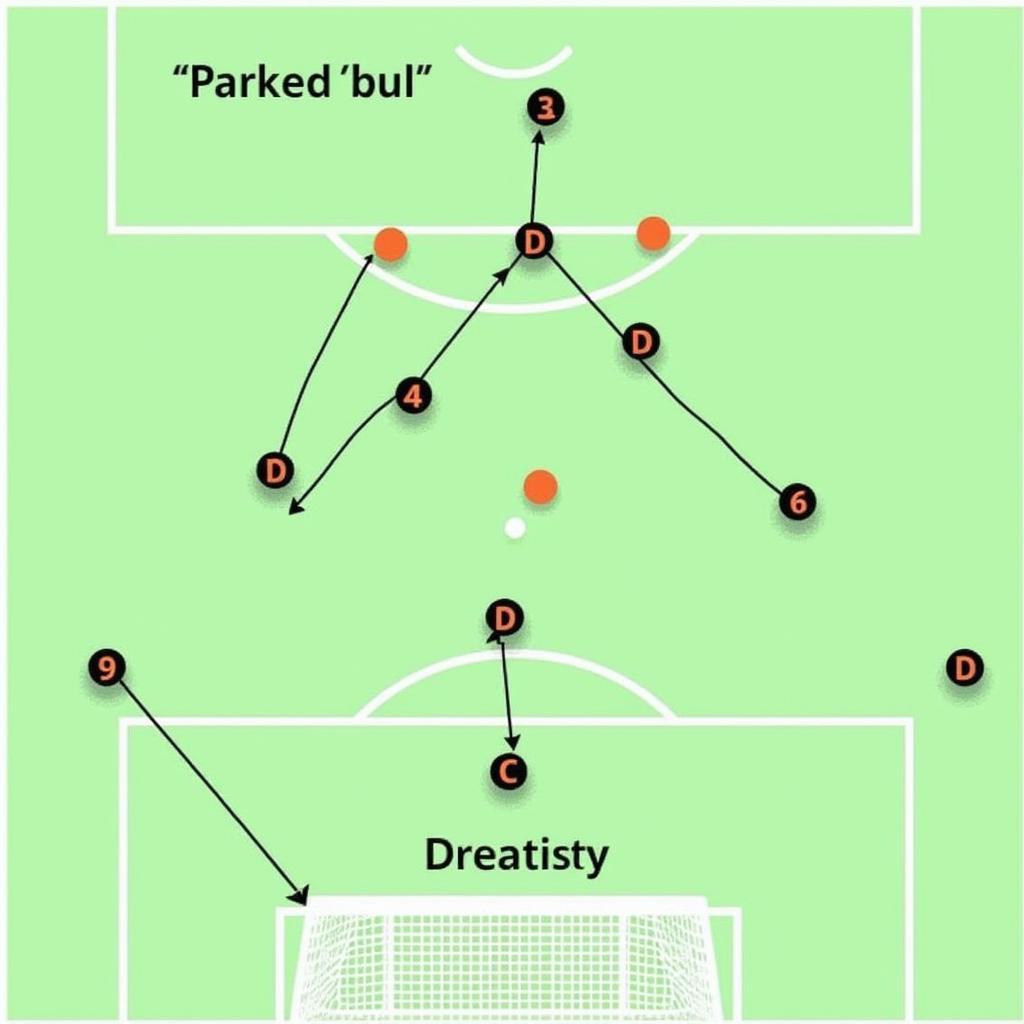Mastering Park the Bus Football: A Tactical Deep Dive
October 16, 2024“Park the bus” is a phrase that often evokes groans from fans who crave free-flowing, attacking football. But let’s be clear: it’s a tactic that, when employed effectively, can be incredibly frustrating to break down and can lead to surprising results. Throughout my career, I’ve both played against and utilized this defensive strategy, and understanding its nuances is key to overcoming it or wielding it successfully.
Deconstructing the “Park the Bus” Strategy
At its core, “parking the bus” is all about deep defending. Imagine a team forming two compact lines of players, like a double-decker bus, right in front of their own goal. Their primary objective? To clog the penalty area, making it nearly impossible for the opposition to penetrate.
Key Principles of “Parking the Bus”
- Deep Defensive Line: The defensive line sits deep, often near the edge of the penalty area, prioritizing their own box over pushing up the field.
- Compact Midfield: Midfielders operate in a tight unit, denying space between the lines and limiting passing options for the attacking team.
- Minimal Risk-Taking: Forget risky forward runs from full-backs or elaborate build-up play. The focus is on safety first, clearing the ball from danger whenever possible.
 Parked Bus Formation
Parked Bus Formation
Why “Park the Bus”? It’s Not Just About Defense
It’s tempting to label teams that employ this tactic as overly defensive or negative. But in reality, “parking the bus” can be a shrewd tactical choice, particularly for teams:
- Outmatched in Attacking Prowess: If you know your team struggles to score goals, a deep defensive block can frustrate a more potent attacking force.
- Protecting a Lead: Late in a game, especially with a slender lead, dropping deep and inviting pressure can be a way to see out a victory.
- Exploiting Counter-Attacking Opportunities: A compact defensive shape can quickly transition into a lightning-fast counter-attack when possession is won.
Breaking Down the Bus: Strategies for Attacking Teams
Facing a “parked bus” can be frustrating, but with the right approach, you can unlock even the tightest defenses:
- Patience is Key: Don’t expect to break down a compact defense with a single pass. Be patient, move the ball quickly, and probe for openings.
- Width is Essential: Stretch the defense by utilizing the full width of the pitch. Overlapping runs from full-backs and wingers can pull defenders out of position.
- Creativity in the Final Third: Tight spaces require clever movement and precise passing. Look for quick combinations, one-twos, and through balls to unlock the defense.
“Parking the Bus” in Modern Football: Evolution and Adaptations
While the basic principles remain the same, the “park the bus” tactic has evolved. It’s no longer just about mindless defending; it often involves elements of strategic fouling, time-wasting, and even psychological warfare to disrupt the opponent’s rhythm and frustrate their attackers.
Conclusion: “Park the Bus” – A Legitimate Tactic or Anti-Football?
Ultimately, the “park the bus” tactic sparks endless debates in the football world. Is it a legitimate tactical approach or a betrayal of the sport’s attacking spirit? The answer, like many things in football, is nuanced. It’s a strategy that can be effective, particularly in specific contexts. And like any tactic, its success hinges on the players’ execution and the manager’s vision.
If you’re a fan of beautiful, free-flowing football, seeing a team “park the bus” might not be your cup of tea. But it’s crucial to recognize its tactical significance and appreciate the discipline and organization required to pull it off successfully.
Need help understanding more football tactics? Check out our article on the foldable plate formation!